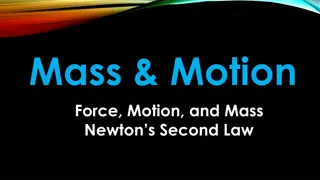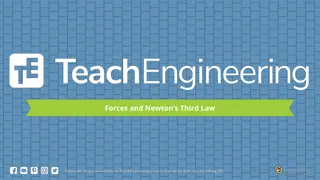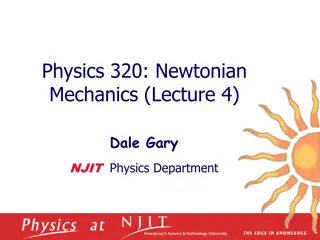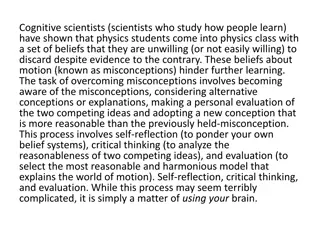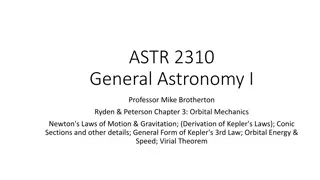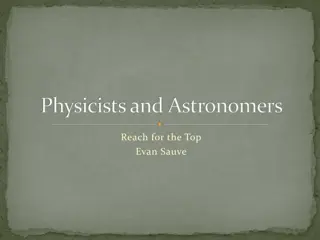Understanding Newton's First Law of Motion
Exploring the foundational concepts of motion and forces, this content delves into Isaac Newton's First Law of Motion. Describing how objects behave when the net force acting on them is zero, the law highlights the significance of inertia and balanced forces in determining an object's state of rest or motion. Through interactive examples and insights, readers gain a deeper understanding of the fundamental principles governing motion in the universe.
Download Presentation

Please find below an Image/Link to download the presentation.
The content on the website is provided AS IS for your information and personal use only. It may not be sold, licensed, or shared on other websites without obtaining consent from the author. Download presentation by click this link. If you encounter any issues during the download, it is possible that the publisher has removed the file from their server.
E N D
Presentation Transcript
Chapter 4 The Laws of Motion The First Law of Motion
The First Law of Motion Let s review How do you know when an object is in motion? What is a force and how does it impact a motion? So what happens when we combine these two ideas? You get the Laws of Motion
The First Law of Motion British scientist Isaac Newton realized that the concepts of motion and forces are directly related He published 3 rules called the Laws of Motion that apply to the motion of all objects we encounter every day, as well as the motion of the planets, stars, and galaxies
The First Law of Motion Newton s First Law of motion describes how an object moves when the net force acting on it is zero This law says that if the net force acting on an object is zero, the object remains at rest, or if the object is moving, it continues moving in a straight line at constant speed In other words, an object at rest, stays at rest. An object in motion stays in motion unless some other force acts on it If the forces acting on an object are balanced, then the velocity of an object doesn t change
The First Law of Motion Only unbalanced forces change velocity Think about pushing a skateboard When you push it, it will increase in velocity because of the unbalanced force But it starts to slow down why? Friction! So the forces are unbalanced
The First Law of Motion What happens when an object in motion doesn t want to change its motion? We call that inertia Inertia is the tendency of an object to resist a change in its motion Inertia depends on the object s mass The greater the mass, the greater the inertia What would be easier to stop it from moving: a volleyball or a bowling ball? Why?
The First Law of Motion Inertia and the First Law of Motion If you observe a change in an object s velocity, you known an unbalanced force is working on it, which is similar to the definition of inertia (an object resists change of motion) This is why the first law is also sometimes known as the Law of Inertia
The First Law of Motion Explain how the first law of motion applies to this picture
The First Law of Motion The first law explains what happens in a car crash and why seat belts are so important If a car is traveling at 50 km/hr and hits something solid, the car will crumple, slow down, and stop in about .1 s Because of inertia, anyone not wearing a seatbelt continue moving forward at the same speed as the car Seat belts work in several ways They reduce the force of the crash acting on the people wearing them by loosening slightly but still restraining the person This increases the amount of time needed to stop, which reduces the force exerted on the person







